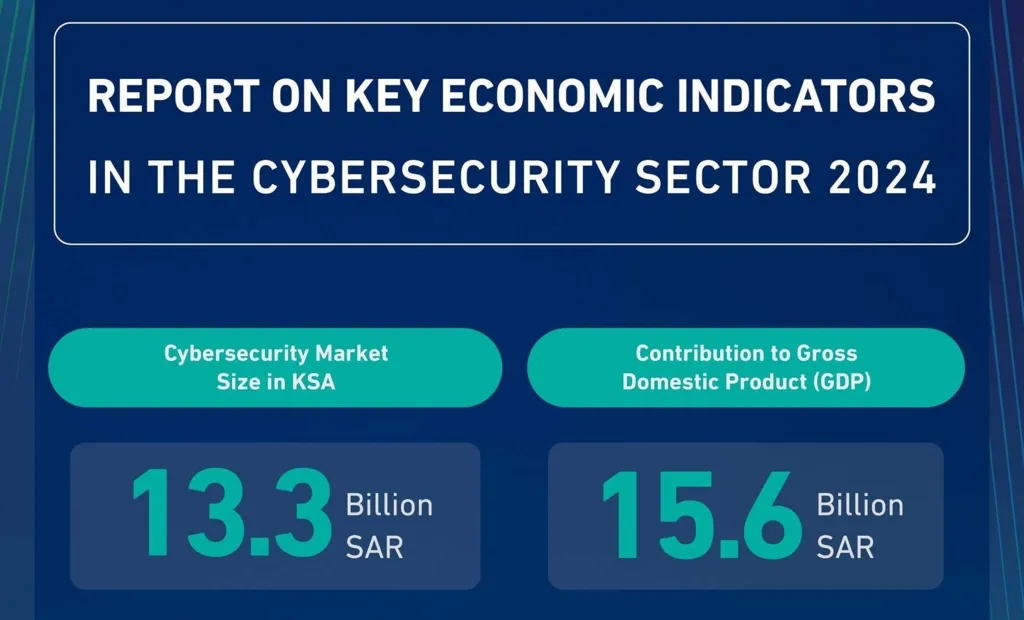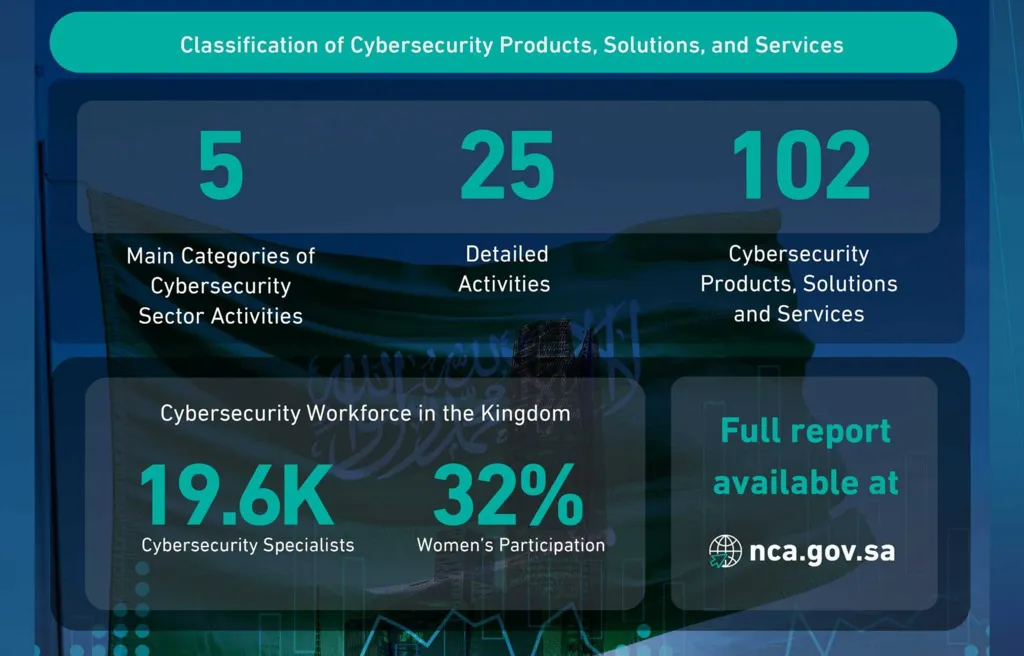Market Snapshot Shows Private Sector Dominance, $15.6B GDP Impact, and a 32% Female Workforce
Saudi Cybersecurity Spending surged to SAR 13.3 billion ($3.55 billion) in 2023, posting a strong 10.8% year-on-year growth. This rapid expansion reflects Saudi Arabia’s evolving digital priorities and reinforces the Kingdom’s strategic focus on cyber resilience as a cornerstone of Vision 2030. As cyber threats grow more complex, the Kingdom is not just increasing its financial commitment to the sector—it’s also building a workforce, nurturing local providers, and emphasizing risk-based defense models.

This article breaks down the key drivers behind the surge in Saudi Cybersecurity Spending—analyzing its sector composition, impact on GDP, workforce development, and private-public investment split. It also takes a look at future expectations, with projections suggesting robust growth ahead. These factors position the Kingdom as a regional leader in cybersecurity maturity and innovation.
SAR 13.3B Cybersecurity Investment Anchored by Private Sector
In 2023, Saudi Arabia’s cybersecurity expenditure totaled SAR 13.3 billion, with 69% of spending driven by the private sector and 31% by the government. Notably, SR2.8 billion of private-sector funding was allocated specifically to protect Critical National Infrastructure. This distribution demonstrates a shared sense of urgency in bolstering national cyber defenses across both commercial and public domains.
56% of Market Comprised of Products and Solutions
Saudi Cybersecurity Spending remains heavily weighted toward tangible technologies. Products and solutions made up 56% of the market in 2023, equivalent to SAR 7.5 billion. The rest went to services that provide real-time monitoring, incident response, and consulting. This prioritization reflects an increasingly proactive cybersecurity stance, emphasizing embedded protection and automation at the systems level.
Sector Generates SAR 15.6B in Economic Value
Cybersecurity has matured into an economic pillar for the Kingdom. In 2023, it added SAR 15.6 billion to GDP (USD $4.16 billion), with SAR 8.6 billion from direct activities and SAR 7 billion through indirect and induced contributions. As investment in cybersecurity grows, so too does its role in enabling digital transformation, regulatory compliance, and innovation in both legacy and emerging sectors.
Workforce Surpasses 19,600 with Growing Female Participation
Complementing financial investment is the Kingdom’s focused effort on workforce development. The number of cybersecurity professionals stood at 19,600 by the end of 2023, with women comprising 32%. These figures reflect Saudi Arabia’s targeted initiatives to empower local talent, diversify economic participation, and align cybersecurity careers with broader national education and employment strategies.
Growth Outlook: 11–13% CAGR Forecast for the Next Five Years
Looking forward, Saudi Cybersecurity Spending is expected to rise at a compound annual growth rate of 11–13% through 2030. This projection is supported by ongoing digitalization, giga-projects, regulatory updates, and a rise in cybersecurity awareness across industries. PwC’s insights suggest that a risk-based investment model—where spending is directed toward controls with the highest impact—will define spending efficiency going forward.
Also Read: AI Innovations to Drive 12.70% Saudi Digital Banking Expansion








